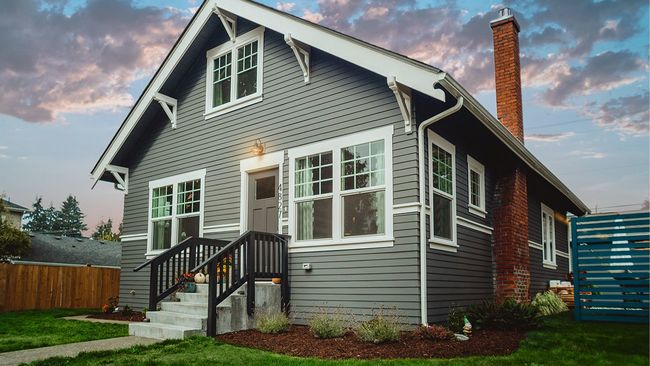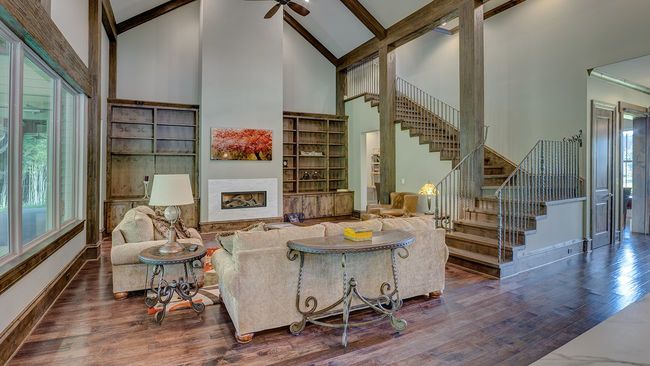Is an ARM the Right Option for Your Needs?

If you're focused on obtaining the lowest possible interest rate or payment during the home financing process, an adjustable-rate mortgage (ARM) may be your answer. Lenders generally charge lower initial rates for ARMs than fixed-rate mortgages, which equals smaller monthly payments.
How an ARM loan works
ARMs can be used for home purchases, or mortgage refinances, including cash-out refinances. They were designed to offer rates that fluctuate after a certain amount of time, creating significant upfront savings. Yet, there is also the potential for higher payments later in the loan term.
When to use an ARM
ARMs are attractive loan programs for the right borrower. The following situations are key reasons to consider one of the many ARM options.
You'll be on the move again soon
Looking to relocate? Maybe you're buying something small to gain equity that can be used toward a larger home purchase? If this sounds familiar, an ARM may be for you. You'll never be hit with rate increases because you'll be moving before the adjustable-rate period begins.
If you're in search of your forever home, though, you may want to avoid an ARM. If rates go up after your introductory period ends, it will likely require a mortgage refinance to lock you into more stable payments.
Market rates are on the rise
Rising interest rates on fixed loans are the most significant reason ARMs become attractive. Since ARMs offer a lower initial rate, they're able to save buyers hundreds or even thousands of dollars on their purchase.
A few rate increases have been announced by the Federal Reserve (Fed), and are expected to occur sooner rather than later. Of course, the Fed does not directly influence mortgage rates, but it does significantly impact them. It's something to pay attention to if you're planning to buy a home or refinance a mortgage this year.
You like to purchase, renovate, and resell properties
House flippers may benefit from an adjustable-rate mortgage's primary benefits, especially if they're certain they can be in and out before that intro period ends. The true advantage is that there is less interest to pay, so more goes toward principal, which equates to faster equity growth — a bonus when it comes time to sell!
Keep in mind home rehab and construction loans also exist, so be sure to seek guidance from a lender before choosing one loan over the other.
Curious to learn more? Read Mark’s story.
Down payments
Down payments for ARMs are usually the same as fixed-rate loans, but loan types allow for lower down payments (FHA or VA loans). In most cases, expect a minimum of 5% down, though 20% is preferred because private mortgage insurance (PMI) is often required on loans with less than a 20% down payment.
Types of ARMs
5/1 ARMs
The most popular adjustable-rate mortgage is the 5/1 ARM. The 5/1 ARM's introductory rate lasts five years, hence the name 5/1. The remaining 25 years of the loan will adjust annually, the "one" in 5/1.
7/1 ARMs
Another option is a seven-year introductory rate that increases annually for the remaining 23 years. Its rate is a little higher than its 5/1 counterpart but is worth considering if you plan on moving within six years.
10/1 ARMs
If you expect to own for ten years or less, a 10/1 ARM may be for you. They come with a higher rate than the 5/1 and 7/1 but are still competitive compared to a traditional 30-year fixed-rate mortgage.
3/1 ARMs
This is the riskiest of all ARM options because the rate can increase sooner than later (after three years is up). You'll want to be very sure of your near plans before choosing this loan option.
How an ARM adjusts
The interest rate on an ARM comprises the index and the margin. The index measures interest rates and the margin is an extra amount added by the lender. Some lenders base the margin amount on your credit record — the better your credit, the lower the margin, and the less interest you will pay on your mortgage.
Your payment goes up when the index of interest rates increases, though your payment may go down when it declines. Keep in mind that this is not true for all ARMs, so be sure to check with your lender. Some ARMs set a cap on how high your interest rate can go, and they can also limit how low your interest rate can go.
The most common indexes lenders use are Constant Maturity Treasury (CMT) securities, the Cost of Funds Index (COFI), and the London Interbank Offered Rate (LIBOR).
Interest rate caps
ARM caps are in place to limit interest rate movement and not shock borrowers when their ARMs adjust.
Initial adjustment cap
This cap says how much the interest rate can adjust after the fixed-rate period expires.
Subsequent or periodic cap
This cap tells you how often your rate can change during each following period. It's most commonly set at 2%, meaning the new rate cannot be more than 2% of the previous rate.
Lifetime or overall cap
This tells you how much the interest rate can increase, in total, over the life of the loan. All adjustable-rate mortgages have an overall cap.
Should you choose an ARM or a fixed-rate mortgage?
We encourage you to check out our resource comparing fixed-rate and adjustable-rate mortgages. There are pros and cons of both loan options, and it's critical to evaluate your needs before making a decision. Remember that just because your friend or neighbor has an adjustable-rate loan doesn't mean it's also the right choice for you.
The key difference between fixed-rate mortgages and ARMs is the interest rate. As the name entails, a fixed-rate mortgage has a rate that stays the same throughout the loan. On the other hand, the rate on an ARM can change after the introductory period.
Key takeaways
Lenders must provide written disclosures on each type of ARM loan you are interested in. The information must include the terms and conditions for each loan, including details about the index and margin, how your rate will be calculated, how often your rate can change, limits on changes (or caps), and an example of how high your monthly payment might go.
Evaluate the risks and consider your goals when you're ready to learn more. Seek guidance from a dedicated mortgage consultant — someone who has your needs top of mind.




